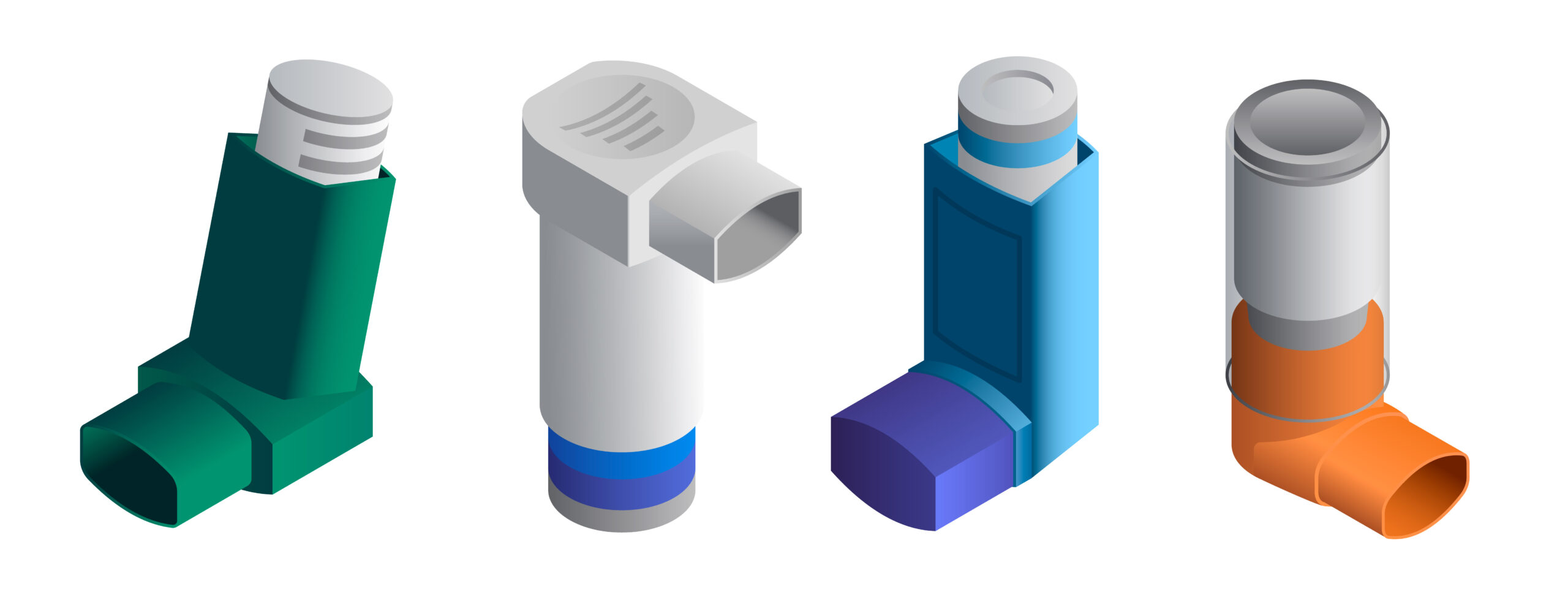
Different Types Of Asthma Inhalers
The below content is derived from research done using sources available on the internet. Safey Medical Devices Inc and its subsidiaries do not take any responsibility for the accuracy of the content. No medical decision should be taken on the basis of below content without consulting with your Medical Practitioner.
There are three main types of inhaler for asthma and COPD. Metered-dose inhalers, Breath-actuated metered-dose inhalers and Dry-powder inhalers. Read on to find out more.
It’s estimated that around 5.4 million people are currently living with diagnosed asthma.
And with this, use an inhaler to manage their condition.
Using an inhaler is an effective way of delivering the right amount of medication straight into your lungs. And good technique is paramount when using such an instrument, as the medicine will be delivered exactly where it needs to go, ensuring less side effects and less hospital visits.
Invented by an English Doctor; John Mudge in 1778, the inhaler originally consisted of pewter tankard for the purpose of inhaling Opium vapour as a way to treat coughs. But times have evolved since then, and the world of inhalers has expanded to suit differing needs.
So, just what type of inhalers are out there and when should these be utilized?
MDI’s
Also known as Metered-dose Inhalers, this type of asthma inhaler was invented in 1955, by doctor George Maison. Sometimes these are known as evohalers, but this is dependent upon the manufacturer.
What Is it?
- MDI’s are the most commonly used type of inhaler.
- The inhalers themselves consist of a small aerosol canister, encased inside a plastic body and fitted with a mouthpiece.
- There are several types of metered dose inhaler that deliver a variety of medications to effectively treat many respiratory diseases.
These include:
- Asthma,
- COPD (chronic obstructive pulmonary disease)
- Emphysema
- Chronic bronchitis.
MDI’s include the more commonly known and utilized blue Inhaler, containing the medication Salbutamol.
Metered-dose inhalers can also be used with a spacer. This is more commonly seen in children who have been diagnosed with asthma.
Metered-dose inhalers are small, convenient and quick to use.
A standard MDI contains a pressurized, inactive gas that propels a dose of medicine in each ‘puff’.
Each time you press the canister, one dose of drug is released.
Once you have pressed the canister, you then inhale the medication
It needs good coordination to press the canister and breathe in fully at the same time. For children, and those patients who struggle with coordination skills, this is where spacers come into the equation, providing some much-needed, and controlled help.
When it comes to using an MDI with a space, the difference is an extra step, as you must release the medication into the spacer. You will then inhale it slowly from the plastic container through the mouthpiece and voila – straight into your lungs.
How Do You Use It?
- Remove the cap from the MDI and shake well.
- Exhale fully.
- Place the mouthpiece between your teeth, sealing your lips as tightly as you can around it. (this is important, so that no air escapes)
- As you start inhaling slowly, press down on the canister once.
- Keep breathing, slowly and deeply and after around 5 seconds, you should have completed a full, inhaled breath.
- Hold your breath for 10 seconds so that the medication can reach the airways of your lung.
- Repeat the above steps each time you puff on your inhaler, leaving roughly 1 minute between puffs.
- Replace the cap.
If you are using a spacer, instead of closing your lips around the direct mouthpiece, you will do so around the spacer itself.
For a clearer visual aid, look here.
Breath Actuated MDI’s
For those who struggle to utilise the ‘hand lung coordination’ required for standard MDI’S, this is where the breath actuated MDI’s work their magic.
What Is It?
These types of inhalers are usually given to people who have difficulty using a standard ‘puffer’. As the name would suggest,
Breath Actuated MDI’s are activated by your breath.
When you breathe in normally through the mouthpiece, it releases medicine in a fine spray form. You don’t have to push the canister to release a dose.
Autohaler and Easi-breathe are examples of breath actuated MDIs. You need to shake these inhalers before each puff so that the medicine mixes well before use.
Proper technique with this type of inhaler is incredibly important, as improper use can lead to less medication being delivered to your lungs and therefore, less effective management of your asthma or COPD condition.
How Do You Use It?
- Make sure that you follow the instructions when it comes to putting together the inhaler. It may have one or more levers that you pull or push.
- Remove the cap on the inhaler.
- It’s important to shake the inhaler. This way you can be sure that the medicine is mixed properly.
- Take a fully exhaled breath.
- Hold the inhaler upright, with the mouthpiece pointing towards your mouth.
- Ensure that you do not cover the vents.
- Place the mouthpiece tightly between your lips.
- Take a fully inhaled breath.
- You will hear a click and feel the mist when the medicine comes out.
(Do not stop inhaling when you feel the mist.)
- Hold your breath for roughly 10 seconds.
- Exhale very slowly.
- If more medicine or further puffs are required, repeat the process as above.
Follow these easy visual steps when it comes to using your Breath Actuated MDI.
DPI’s
Dry Powder Inhalers or DPI’s do not work in the same way as MDI’s. Instead of producing a spray when you breathe in through the mouthpiece, they release your medication in a very fine powder form.
What Is It?
You do not need to pump or press for the medication to be released. All you need to do is take a deep breath which will make you inhale a single dose.
As the type of inhaler requires inhalation alone, DPI’s also require a very hard breath in order to be able to distribute the powder directly where you need it – into your lungs.
Developed as an alternative to MDI’s, so as to offer an alternative when it comes to the art of pressing the inhaler and inhaling the medicine in a coordinated manner, there are two common types of dry powder inhaler.
These are the turbohaler and the diskhaler.
Both of these will require a manual touch in terms of of the medication being released. Usually, this will be to either twist or turn the inhaler body until you hear a “click”.
This means that your dose has been released and you can now fully inhale.
DPI’s take on many other different forms, including:
Accuhalers
Clickhalers
Easyhalers
Novolizers
Twisthalers
Due to the increase of inspiratory pressure required when using such an inhaler device, it can be limiting to certain groups wishing to use it, such as children and the elderly.
How Do You Use It?
- If your DPI comes with an inhaler cap, remove it.
- Add your specific dose of medication, as directed by your GP or healthcare professional.
- Make sure to tilt your head back, exhaling slowly and fully as you do so.
- Place the mouthpiece between your teeth and close your lips around it tightly.
- Inhale quickly and deeply, so as to get all of the medicine out of the inhaler and hold your breath for 10 seconds.
It is extremely important that you do not exhale into your dry powder inhaler. This will result in moisture getting into the device, making the medication clump together and impossible to use.
For a closer visual aid when it comes to administering your medication, look no further than here.
To get more out of your inhalers, why not look at an Safey Health Smart Inhaler?
Smart inhalers contain sensors that attach to existing inhalers and record when your medication is taken. They also allow for data to be transferred from the smart inhaler automatically.
The Safey Health Smart Inhaler also contains Smart Sensors to track poor inhaler technique and train patients on how to correct it.
The device works with many different types of inhaler, which is important as many people with asthma have to switch between these.
If the Safey Smart Inhaler sounds like something you might be interested in, don’t delay. Check out our website or get in touch with us today to find out more.









